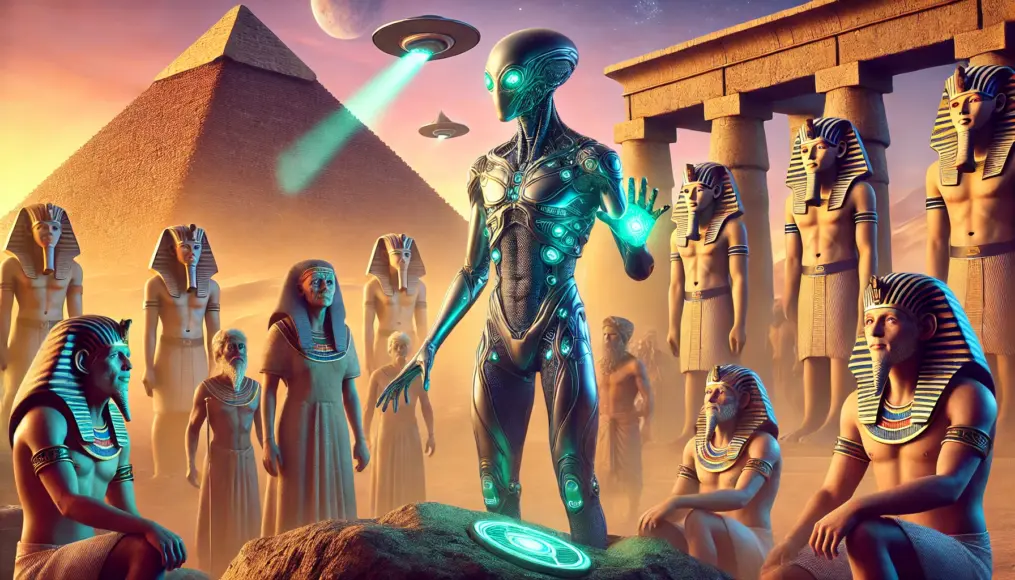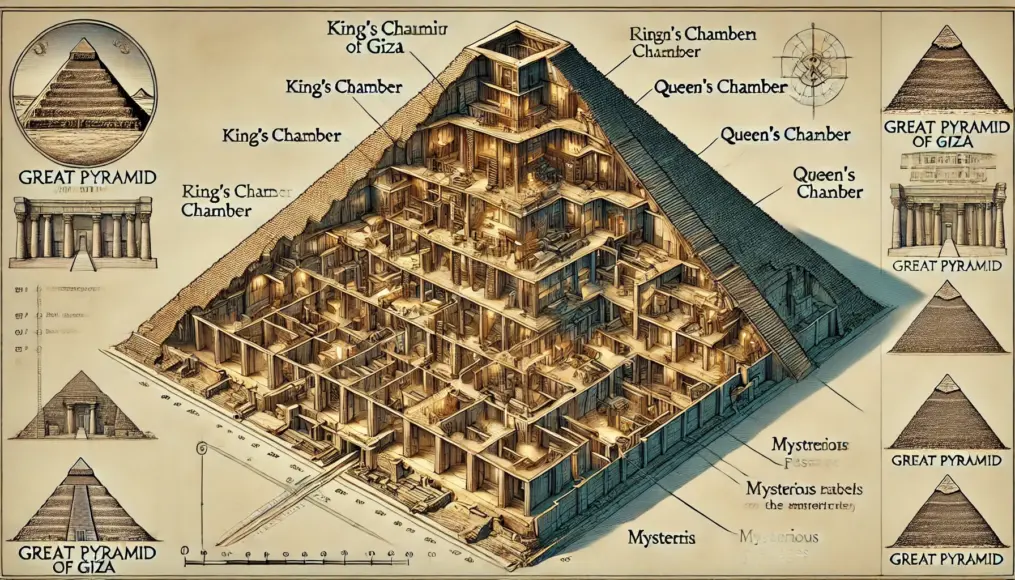The Great Pyramid of Giza, constructed by ancient Egyptian civilization, is shrouded in mystery due to its scale, precision, and construction methods.
Built around 2500 BCE, this monumental structure still puzzles modern scientists regarding how it was completed with the technology available at the time.
In this article, we delve into traditional theories and the possibility of unknown technologies, exploring this enigma from multiple perspectives.
Basic Structure of the Pyramid and Questions Surrounding Its Construction
To understand how the Great Pyramid of Giza was built, it’s essential to grasp its fundamental structure and construction processes.
Characteristics of the Massive Stones
The Great Pyramid is composed of approximately 2.3 million blocks of stone, some weighing between 2.5 tons and up to 80 tons.
These stones consist of limestone quarried near Giza and granite transported from the Aswan region.

Challenges in Transportation and Placement
Traditional theories suggest that ramps and logs were used to transport the stones.
However, critics argue that managing such massive stones with precision and scale presents significant challenges in terms of labor, time, and logistics.
Additionally, constructing the ramps themselves would have required enormous resources, raising questions about the feasibility of this method.
Limitations of Conventional Theories
The mainstream theory attributes the pyramid’s construction to the ingenuity and labor force of ancient Egyptians.
However, there are several aspects where this explanation appears insufficient.
Scale of Workforce and Supply Chains
It is estimated that tens of thousands of workers were involved in the pyramid’s construction.
This workforce included skilled masons and surveyors, as well as numerous support laborers.

Living Conditions of the Workers
Workers lived in dedicated villages near the construction site. Archaeological evidence has revealed details about their food supply and healthcare systems.
However, maintaining such a large-scale project’s logistics raises questions about whether this was achievable in ancient Egypt.
Precision in Surveying and Design
The Great Pyramid is aligned perfectly with the cardinal points of the compass.
While this suggests advanced surveying techniques, the exact methods remain unclear.

Possibility of Unknown Technologies
Some researchers and enthusiasts suggest that unknown technologies might have been used in constructing the pyramids.
While these hypotheses often lack scientific validation, they provide fresh perspectives on otherwise unexplained phenomena.
Levitation Technology: Where Myth Meets Science
Egyptian myths describe movements of objects defying gravity.
This has led to theories that technologies like sound waves or magnetism might have been used for levitation.

Hypothesis of Ultrasonic Technology
Modern scientists have experimented with ultrasonic technology to levitate objects.
If ancient Egyptians harnessed this technology, it could have revolutionized the transportation and placement of stones.
Advanced Energy-Based Stone Processing
The stones used in the pyramid exhibit precise cuts and polishing.
Some argue that the tools available at the time could not have achieved such results.

Alien Involvement and Egyptian Mythology
One of the more speculative theories posits that aliens played a role in pyramid construction.
Although lacking scientific evidence, this theory connects Egyptian mythology with architectural mysteries.
Alien-Assisted Technology
Egyptian myths mention “gods descending from the sky,” interpreted by some as evidence of extraterrestrial beings imparting knowledge.

Pyramids as Energy Devices
According to some theories, the pyramids were not mere tombs but devices to harness cosmic energy.
This idea is based on the internal structure and geometric arrangement of the pyramid.

Conclusion: Decoding the Mystery of Pyramid Construction
The Great Pyramid of Giza stands as a testament to ancient Egyptian wisdom and humanity’s potential.
Exploring the possibility of unknown technologies encourages us to reassess human capability in the past and find inspiration for future scientific advancements.
What do you think about the mysteries of pyramid construction? Share your thoughts in the comments!




Comment